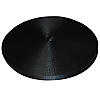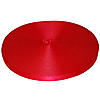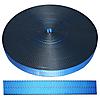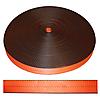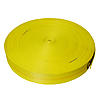
The Basics of Tie Down Webbing for Cargo Securement
Every day in the United States tie-down webbing is used to help keep cargo secured while going down the roadways to help transport household goods, vehicles, off-road toys, raw materials, and endless other applications by using tie-down straps. Tie Down Straps start by being created with tie-down webbing that is used to make popular tie-down strap options such as Ratchet Straps, E Track Straps, Endless Loop Straps, Hunting Treestand Straps, Car Tie Down Straps, Winch Straps for Flatbed Trailers, and many more.
No matter if the securement application weighs 5 pounds or 5,000 lbs tie-down straps are the method of choice for load securement for weekend warriors, professional truck drivers, flatbed drivers, moving companies, hunters, and many others alike. Tie Down Webbing has become a household staple item in moving various sizes of cargo with vastly different weights safely on our roadways. Polyester Tie Down Webbing is the webbing of choice for anyone who is securing cargo as it provides a good level of strength with very little stretching to ensure that your cargo does not move out of place during transit.
Tie Down Straps are created and tested by using a Working Load Limit tag that is designed to help keep you safe while transporting cargo on the roadway. A working load limit (WLL) tag takes into count the ultimate amount of force before failure or the breaking strength point of the strap and divides this number by three. For example, if the strap were to have 10,000 lbs breaking strength hypothetically the strap would be safely rated in this circumstance for 3,333 lbs.
Working Load Limits were designed for circumstances that you can not simply predict or measure without the potential for error. One thing is for certain with driving and especially so with hauling cargo that you can never fully expect what other motorists on the roadway are going to do one hundred percent of the time. It only takes another driver of a vehicle to sudden lane change, sudden hard brake, or pull out in front of you to cause you to slam on your brakes or quickly move out of the lane you were traveling in.
When you suddenly lane change or a hard brake with your vehicle and potentially trailer as well you can cause the cargo that is safely secured to have added forces thrown at the strap that is securing the cargo. These sudden forces could potentially cause your strap to break, load to shift out of place, or even have the load come off of the trailer or out of the pickup truck bed. By having a working load limit you can help improve the odds that when these circumstances arise that your cargo will not come out of place, cause the strap to break, or the load tossed off of the trailer. Make sure to check out our full guide on How to Understand Working Load Limits.
How to Find the Length of Webbing That You Need for Your Securement
One of the best ways for you to determine the length of tie-down webbing for your next securement application is by using a trick that the pros use. First, you will need a piece of string or fishing line in to measure the precise length that is needed for your cargo securement. Next, measure the length of the strap you will need for your cargo securement. You can do this by wrapping the fishing line or string around the cargo and from the securement point to the securement point or by measuring and taking a guess of how much webbing you need and accommodating extra length as it is always better to have more than enough webbing than running out or not having enough webbing.
If you are someone who secures various different sizes of cargo often such as a professional mover, truck driver, or someone who tends to move cargo of various sizes often it may be a good idea to purchase straps that have extra webbing in order to accommodate various cargo needs over time. It’s usually much more cost-effective to purchase slightly larger in length straps that fit a wide range of different applications than buying several different straps in order to do the same job.
Another quick tip when it comes to purchasing straps that fit various different cargo securement needs is color coordinating the straps based on the length of the strap. For example, you could use green color for a 16-foot long strap, blue for a 20-foot strap, and yellow for a 12-foot long strap as an example. This helps you know exactly how long each strap in your inventory is without taking the time to measure the straps before every use in order to help you stay on the road for longer periods of time.

The Different Types of Tie Down Webbing
Polyester Webbing – Polyester Webbing is the main webbing of choice for professional truckers, flatbed drivers, and the professional moving industry. This webbing provides little stretching and a great level of strength to ensure your valuable cargo remains safe during the next trip. One of the added benefits of using polyester webbing is the fact that polyester webbing does very well outdoors in direct sunlight against UV rays, rain, snow, strong wind gusts, extreme cold, and extreme heat. We often hear of customers using tie-down straps made with polyester webbing for over five years with continued success.

Seatbelt Webbing – Seatbelt Webbing blend is an alternative tie-down webbing blend compared to traditional polyester webbing. This webbing features an alternative style webbing weave and is similar to the webbing weave found inside vehicles for seatbelts. However, this type of seatbelt webbing should never be used for vehicle safety as this webbing was not the designed purpose. Seatbelt webbing has very similar properties to polyester webbing such as great durability when left outside in the elements such as the cold, rain, snow, ice, extreme heat, direct sunlight, strong winds, and more!

Cordura Sleeve Webbing Protection – Cordura Sleeve is designed to help protect your tie-down webbing from sharp cuts or potential friction burns that you may face while transporting cargo. The Cordura sleeve is designed to be sewn around the tie-down webbing to help create a barrier or shield for your tie-down webbing. This works great for those who are using 2-inch tie-down straps often as they help to prevent that straps from becoming damaged or destroyed.

The Different Sizes of Tie Down Webbing
1-inch Tie Down Webbing – 1-inch Tie Down Webbing is used for many different securement applications such as securing cargo around the house, in the back of a pickup truck, moving van, utility trailers, securing motorcycles, and many more. 1-inch Tie Down Webbing is available with many different breaking strengths and working load limits to cater to a wide variety of different cargo weights. Our 1-inch 6,600 lbs webbing blend is the heaviest duty 1-inch tie-down webbing available on the market and is designed to provide extreme durability and strength for its size.
2-inch Tie Down Webbing – 2-inch Tie Down Webbing is one of our most popular types of tie-down webbing and is the most commonly thought about the size of various tie-down straps. This webbing can secure anything from Treestands, ATVs, UTVs, Motorcycles, Furniture, Bicycles, Kayaks, Groceries, Slacklines, and TVs to name a few of the popular options. 2-inch Tie Down Webbing can be found with several different breaking strengths such as light-duty, standard-duty, and heavy-duty webbing blends.
3-inch Tie Down Webbing – 3-inch Tie Down Webbing is one of our heavier-duty tie-down webbing blends that is used mainly for creating tie-down straps for flatbed trailers. These straps are designed for some of the heaviest duty cargo that is being transported on the roadways. 3-inch Ratchet Straps and 3-inch Winch Straps should never be used for around-the-house securement types of applications and you should only use them if you are transporting extremely heavy cargo on flatbed trailers.
4-inch Tie Down Webbing – 4-inch Tie Down Webbing is our heaviest tie-down webbing available and is used for making 4-inch tie-down straps such as 4-inch Ratchet Straps and 4-inch Winch Straps. These straps are used for securing oversized, extremely heavy, and oddly shaped cargo on flatbed trailers. The Ratchet Hardware that is used on 4-inch webbing alone weighs over 8 lbs for each strap and features 5,400 lbs working load limit per strap.
The Durability of Polyester Webbing
When it comes to polyester tie-down webbing one thing is for certain you never know what to expect during your cargo securement from start to finish. Whether you are in extreme cold, extreme heat, snow, rain, wind gusts, or even hail your cargo will remain secured with the durability of polyester webbing. Polyester webbing has been designed to be durable no matter where your next journey takes you next.
Polyester webbing when paired with corner protectors can help to offer you even better levels of protection and durability by helping to prevent sharp metal edges from causing friction burns or cuts. The number one risk of tie-down straps failing is the tie-down webbing that fails well before the hardware fails which can cause the strap to fail. This is why it’s extremely important to buy reputable tie-down straps that use high-quality webbing as it is the lifeline of keeping your cargo secured and your strap together. Remember, tie-down straps are only as strong as the weakest link of the strap and it only takes one weak link to fail for the strap to need to be replaced.
Polyester Webbing and Tie Down Straps have been proven to last longer when paired with corner protectors and have been shown as a cost-effective solution for those who ship often for moving companies, flatbed truckers, and dry van drivers. We have many different types and lengths of corner protectors to fit a variety of different loads with both standard-duty and heavy-duty corner protectors as well.
Shop Popular Tie Down Webbing Products
The Differences Between Tie Down Webbing and Recovery Tow Strap Webbing
The main difference between polyester webbing that is used for securement applications and nylon webbing that is used for recovery towing applications is the amount of stretching that occurs. Polyester webbing stretches very little and provides a great amount of strength. This is the ideal combination when it comes to securing cargo that is being transported from point a to point b as the last thing you want to have to happen is cargo slides out of place or becomes unsecured while going down the road.
Nylon Webbing provides great amounts of durability and stretching which helps to absorb the initial jerk when you are recovering anything from a vehicle, farm equipment, ATVs, UTVs, or other objects that have become stuck in the elements such as rain, snow, dirt, sand, or deep water. Nylon webbing is designed to take out of the sudden jerking motion to help protect the object you are recovering from receiving damage from the initial movement.
This is why we never recommend anyone using any form of a tie-down strap or ratchet strap to recover a vehicle or equivalent under any circumstance. It’s extremely unsafe to do and can cause great amounts of damage to the object and quickly cause injuries if the strap were to break while recovering. On the flip side, you should never use any form of tow strap or recovery strap to secure cargo as they stretch more than 3.5x the amount than the traditional tie-down webbing counterpart. By using tow straps as a method of keeping cargo secure you are at extreme risk of the load falling over, falling off the trailer or out of the pickup truck bed, and could quickly cause injury to those on the roadways.
Next time you are in a bind and need to be recovered out of a sticky situation please remember to only use tow straps that are designed for recovery use or tow chains that help absorb the shock when recovering. This can help you stay safe while keeping the vehicle or object you are moving damage free.
How to Store Polyester Tie Down Straps and Polyester Webbing
When it comes to storing tie-down straps and polyester webbing there are a few key things that are equally important in both scenarios. Firstly, keeping out of areas of high moisture that are prone to mold and mildew. Mold and Mildew have been known over time to decrease the strength and durability of tie-down straps. Secondly, the next most important way to store straps is away from any sharp edges, metal, or areas that could receive cuts or burn marks in the webbing.
This could cause your strap to become damaged and unsafe to use in most cases if you are not careful and especially even more so true over time. Lastly, it’s essential to keep the straps when it is possible out of direct sunlight. Although you may not see a direct correlation between sun damage from the sun’s UV lights over some time you may notice the webbing fading which could potentially cause harm.
The best method to store straps or webbing is in duffle bags, zip lock bags, using rubber bands to keep excess webbing from flying around in the wind, or keeping them in a nice dry area of your vehicle such as the doors, cabinets, or under the bed. All of these provide great ways to keep your webbing long-lasting in-between moves or usage. You can also view our popular blog post on how to store ratchet straps properly for even more ideas on proper ways to keep your straps safe.
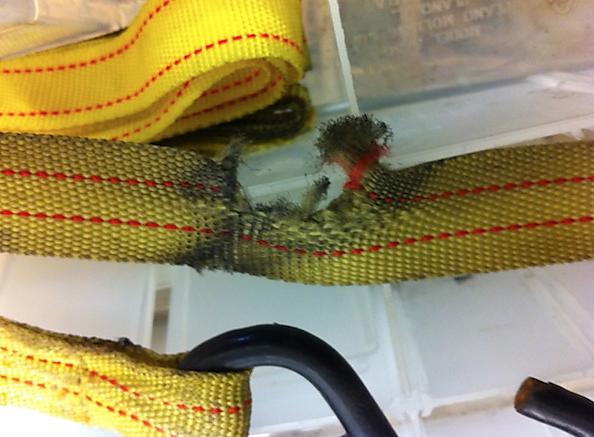
How to Know If Your Tie Down Webbing Has Become Damaged
Tie Down Webbing tends to almost always be the weakest link of any sort of tie-down securement strap in terms of durability. When it comes to tie-down straps becoming damaged or destroyed it is almost always the webbing that has become damaged before the hardware. This is caused in part by sharp edges causing tears, friction burns to the webbing, direct sunlight for long periods of time, or even overtightening of the strap causing the webbing to fail.

Knowing that tie-down webbing is the number one way that tie-down straps tend to fail over time it’s extremely important to inspect your tie-down straps before and after every use to ensure they are safe to use before you hit the road. We recommend anyone securing cargo to inspect each strap that was used for cargo securement for roughly thirty seconds after every use. Look for any tears in the webbing, burn marks, cuts, webbing fraying, discoloration of the webbing, or any road debris that have come in contact with your webbing or strap.

Frequently Asked Tie Down Webbing Questions
Does Weather Impact the Strength of Polyester Webbing? – No, weather and moisture absorbed in the tie-down webbing straps still keep the straps and webbing within the safe working load limit rating. As long as you are following the working load limit tag on the webbing or strap you should not run into any issues.
Does Tie Down Webbing Weaken Over Time? – As everyone faces a different situation on how the straps are stored and how much repetitive usage they take every week it’s hard to say a definite yes or not. Tie Down Webbing can weaken over time when improperly stored in direct sunlight, in moisture-prone areas that could form mold, or in areas where the webbing could rub against metal objects that could cause small tears or burns. As long as you are following proper storing techniques for the most part they should last longer than several years for most normal users
What is the Longest a Strap Be Made? – Straps can technically be made in any length of webbing for the most part but normal applications typically require a strap between 20-100 feet on average as the longest. This can vary depending on the load you are securing or if the webbing is being used as an alternative application such as a slackline.
Can You Wash Tie Down Webbing? – Tie Down Webbing and Tie Down Straps can be quite dirty after a long period of repetitive use. We strongly urge our customers to not to wash the tie-down webbing or tie-down straps as it could do more harm than good from the straps absorbing excess water. Normally the rain on most securements may help remove the excess grime and dirt while on the road in the back of a pickup truck or open trailer and can immediately air dry after.
Can Tie Down Webbing Be Repaired? – In most cases tie down webbing on tie-down straps can be partially repaired if the strap has two different parts. This is due to fixing the damaged part of the strap and re-using the part of the strap that is still good to make a strap in like-new condition for a fraction of the price compared to a brand new strap. If you are interested in learning more about our custom-made strap capabilities give our experts a call at 800-483-2189 or by using our online contact us form located at the top of the website to receive more information.
Can Tie Down Webbing Dye Bleed Out While In The Elements? – Most colors of tie-down webbing are pretty good at not bleeding out while outside in the rain, snow, or around water applications. However, if you are using webbing that is in certain rainy or moist conditions you will want to avoid colors such as Red or Orange that bleed dye the most. This is also in part why tent straps are often white in color as they pose no risk of bleeding dye out onto white canopies.



